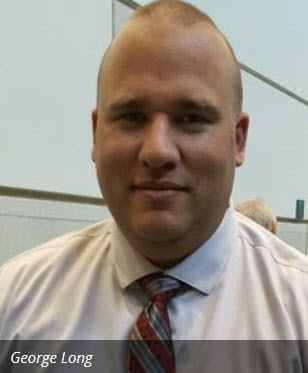Explore. Connect. Excel.
AMU Alumni: Supervising 911 Public Safety Communication
George is an assistant operations manager for the Bureau of Emergency Communications (Portland/Multnomah 9-1-1) in Portland, Oregon. He has been in the field for 13 years and has been an assistant operations manager for two years.

In his role, George supervises the emergency communications supervisors, who oversee their respective shifts. He assists with personnel issues and larger operational issues, such as policy creation and implementation and addressing community and partner agency needs. In addition, George works with partner agencies through a liaison to ensure that the Bureau’s needs are met.
George recognized that his career field would involve responding to terrorist-related incidents and decided to pursue a second degree to round out his education. He completed a second master’s degree in national security studies through AMU in August 2012.
George has been a member of the APUS Epsilon Pi Phi chapter since May 2010. He joined this student organization because he was looking for networking opportunities and wanted to stay informed of new trends in emergency management.
He currently serves as the president of APUS’s Epsilon Pi Phi chapter. George led a lunch and learn in October 2018 called “Making Volunteer Efforts Work For You” on behalf of Epsilon Pi Phi. During this event, he highlighted the value of building relationships through volunteer work and co-curricular programs.
We connected with George to learn more about his career and the challenges that he faces as a 9-1-1 operations manager.
Entering the Emergency Communications Field
George originally wanted to pursue a career as a police officer and thought that working in emergency communications would be a good starting point. However, after being introduced to emergency management and a reigniting of his childhood interest in radio communications, he decided to stay with a career in emergency communications as a way to help others and to support large-scale incidents.
To prepare for a career in this field, George spent time with the U.S. Air Force through the ROTC program when he attended Oregon State University, pursuing a B.S. in history. He also spent time working for the campus Department of Public Safety, which helped him to understand what he was getting into and how to handle the stress of helping others.
George notes that his degrees have definitely helped him in the field. He says, “At my job, people look to me as a subject matter expert in 9-1-1 communications and disasters. I instruct classes on the topic, and it has helped me to better ‘think outside the box’ during major incidents to handle service calls better and to locate resources that are needed on-scene.”
He adds, “Oftentimes, larger incidents require more resources — more police, ambulances, fire trucks, public works and power companies. My degrees allow me to think beyond my direct vision (what is on my screen) and to think who else may have something that we need and how to get it.”
George advises that people who want to enter the emergency communications field should take the time to visit a 9-1-1 center to see what the job entails. They should also listen to the calls that the center handles on a regular basis.
He says, “The hardest thing is asking the right questions. I need to get and support the right resources on scene, every time, all the time.”
To date, George says his greatest accomplishment was working for a 9-1-1 center that consolidated with another 9-1-1 center. The new one covered a decent-sized county with a small population, but it was coastal. Disasters were a major threat.
George worked with much of the public safety leadership in that county to ensure they were all on the same page for what 9-1-1 is and does in various incidents by updating policies. That enabled different agencies to work as one team when the time comes.
In 2016, the Portland 9-1-1 center began offering the option to send a text message to 9-1-1. George notes that 9-1-1 personnel take a few calls a day through the 9-1-1 text feature. Texting during an emergency is helpful for members of the public who are deaf or hard of hearing. These texts are also useful if someone has a speech disability or if a voice call to 9-1-1 might otherwise be dangerous or impossible.